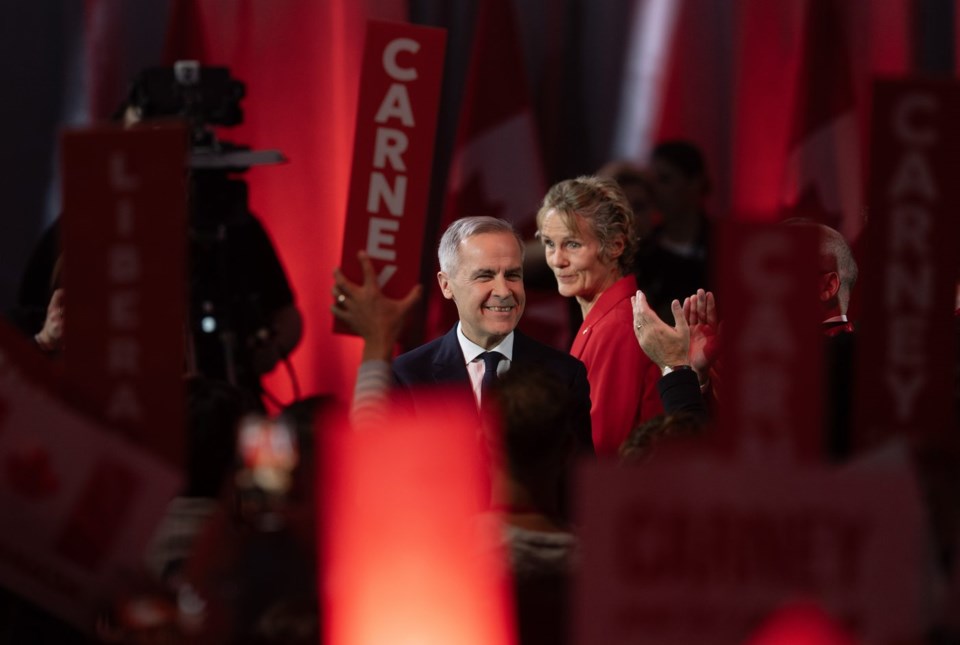Mark Carney has become Canada’s new prime minister after leading the Liberal Party to its fourth consecutive mandate. The result was a minority government, meaning the Liberals won the most seats but not enough for a majority.
Mark Carney Becomes Prime Minister as Liberals Secure Narrow Win
Carney stepped into the spotlight earlier this year when he replaced the outgoing prime minister. He won the leadership of the Liberal Party and quickly called a federal election. His main campaign message focused on handling big issues like the cost of living, trade tariffs, and growing threats from U.S. President Donald Trump.
The federal election was held on April 28. By early Tuesday morning, CTV News announced that the Liberals had won enough seats to stay in power. At 1:45 a.m. Eastern Time, they had secured or were leading in 166 out of 343 ridings. A party needs 172 seats for a majority. So, Carney will now lead a minority government.
During his victory speech in Ottawa, Carney said he entered politics to make “big changes” while holding on to Canadian values. He talked about humility, ambition, and unity—calling them the values that guide him.
Conservatives Fall Short, Smaller Parties Lose Ground
The Conservative Party, led by Pierre Poilievre, ended up in second place. They were leading in 146 ridings but did not get enough support to form a government. This is the fourth time in a row the Conservatives have lost to the Liberals since 2015.
Trump Sparks Outrage with Canada ‘Works Better as a U.S. State’ Claims Ahead of Tight Election
Jagmeet Singh’s NDP had a major setback, dropping from 24 seats to just 7. Singh even lost his own riding in Burnaby Central, British Columbia, to a Liberal challenger. Following his loss, he announced that he would step down as leader of the NDP.
The Bloc Québécois also faced a decline, going from 33 to 23 seats. The NDP and Bloc could still play a key role in helping the minority Liberal government pass laws, since they may hold the balance of power in Parliament.
The Green Party was also affected. Elizabeth May held onto her seat, but the party’s co-leader Jonathan Pedneault lost in Montreal. The Greens are now down to just one seat.
Trump’s Role, Carney’s Background, and Voter Turnout
Many believe Donald Trump’s actions during the campaign helped the Liberals. His talk about turning Canada into the “51st state” caused a rise in Canadian nationalism. Carney used this to remind voters that he would protect Canada’s independence. He warned that Trump wanted Canada’s land, water, and resources, and promised to stand firm.
Jet Fight Erupts! Portugal, Canada Ditch F-35 Dreams for Saab’s Gripen
During the campaign, Carney made his experience a major part of his message. He had been Canada’s top banker and later led the Bank of England. He also worked on managing economic crises like the 2008 financial crash and the fallout from Brexit.
Unlike other political leaders, Carney had never held elected office before this election. He was born in Fort Smith, Northwest Territories, making him the first prime minister from Canada’s North. He is also one of the few to be born west of Ontario.
Carney ran in Nepean, Ottawa, and won his seat easily. The riding had previously been held by a Liberal MP who was dropped before the election. Interestingly, his main opponent, Poilievre, was running in the neighbouring riding of Carleton.
Even before the results were finalized, voter turnout broke records. Over 7.3 million Canadians voted in advance polls—much higher than the 5.8 million who did in 2021.
Conservative leader Poilievre gave a speech after the results. He congratulated Carney and promised to continue fighting for his party’s goals. He thanked voters and said he would remain as the leader of the opposition.
Before becoming prime minister, Carney worked at Goldman Sachs and served as an economic adviser to the Liberal Party. He took over from Justin Trudeau in March, shortly before turning 60. One of his first moves was to scrap Trudeau’s unpopular carbon tax, which won support from some voters.
The election became not just a contest between two political parties but also a battle over who could best manage the country’s economy and stand up to external threats, especially from the United States.

